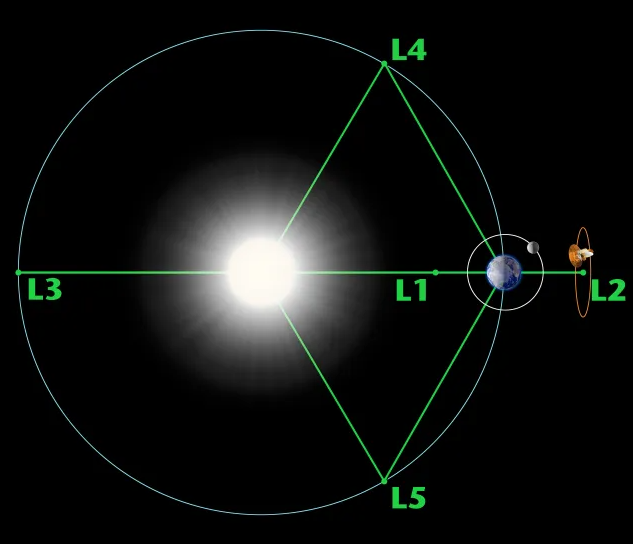Image credit: https://science.nasa.gov/
There are five Lagrange points in total, each named with a letter from L1 to L5. They exist in any system with two massive objects, like the Sun and Earth, where gravitational forces combine and create points of equilibrium. These points offer unique advantages for observing the system and positioning spacecraft.
Here’s a breakdown of the five Lagrange points:
L1: Located between the two objects, on the line connecting them. Ideal for uninterrupted solar observation, like Aditya-L1.
L2: Also on the same line, but on the opposite side of the smaller object from the larger one. Stable for telescopes and missions studying the far side of an object.
L3: Located on the same line, beyond the larger object. Stable and secluded, suited for missions studying the undisturbed environment behind an object.
L4 and L5: Situated at the vertices of equilateral triangles with the two objects at the other bases. These “trailing” and “leading” points are relatively stable and often host dust and debris, forming celestial bodies like Trojan asteroids.
Significance of Lagrange points:
- Uninterrupted views: L1 and L2 provide constant observation of the Sun or the object beyond, without eclipses or interference.
- Fuel efficiency: Spacecraft at L1 or L2 require minimal fuel to maintain their position compared to orbiting the object directly.
- Unique vantage points: Each point offers a distinct perspective on the system, allowing for comprehensive study of objects and their interactions.
- Diverse applications: Missions use Lagrange points for solar observation, studying planets and moons, understanding space weather, and even asteroid exploration.
Lagrange points have revolutionized space exploration, enabling groundbreaking missions that have deepened our understanding of the universe. Aditya-L1’s recent arrival at L1 is a testament to their vital role in pushing the boundaries of scientific discovery.
If you’d like to delve deeper into any specific Lagrange point or its associated missions, feel free to ask! I’m happy to share more information.
Reference:
What is a Lagrange Point? – NASA Science
